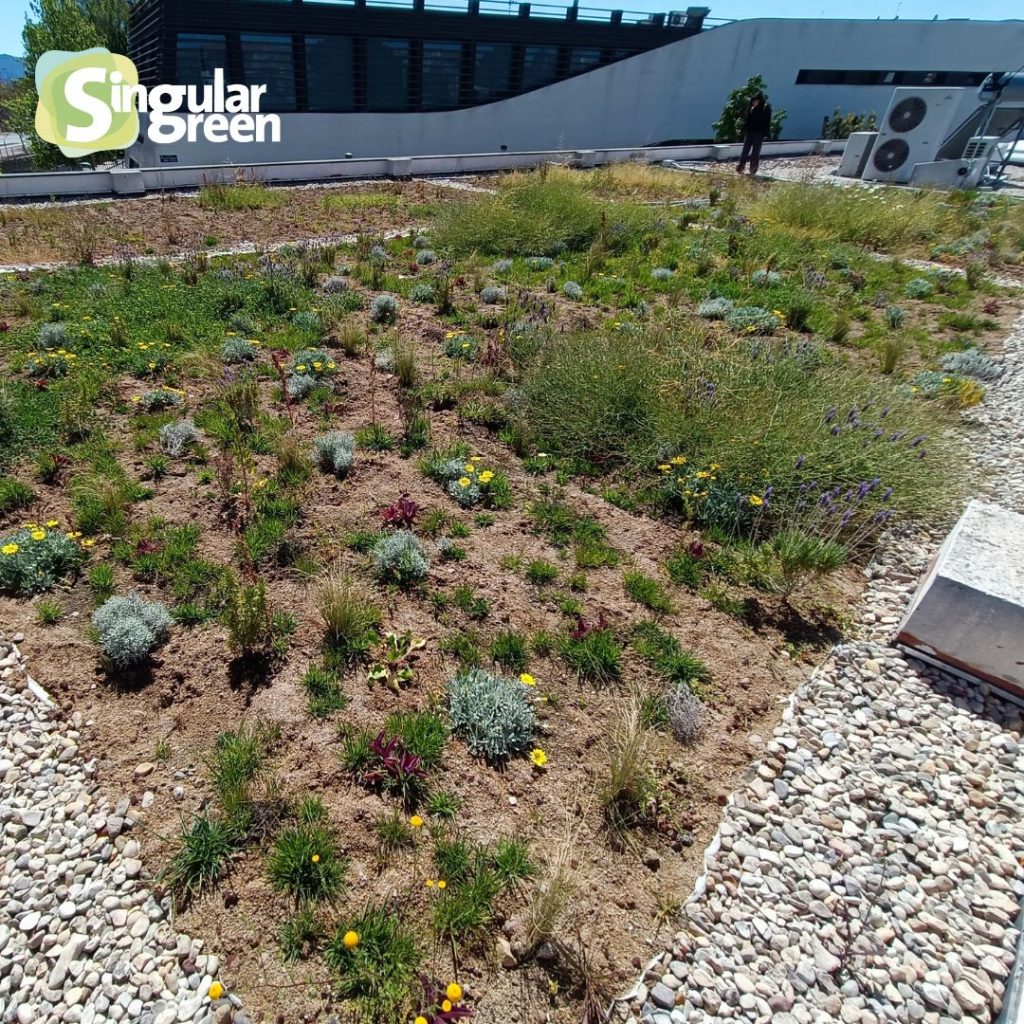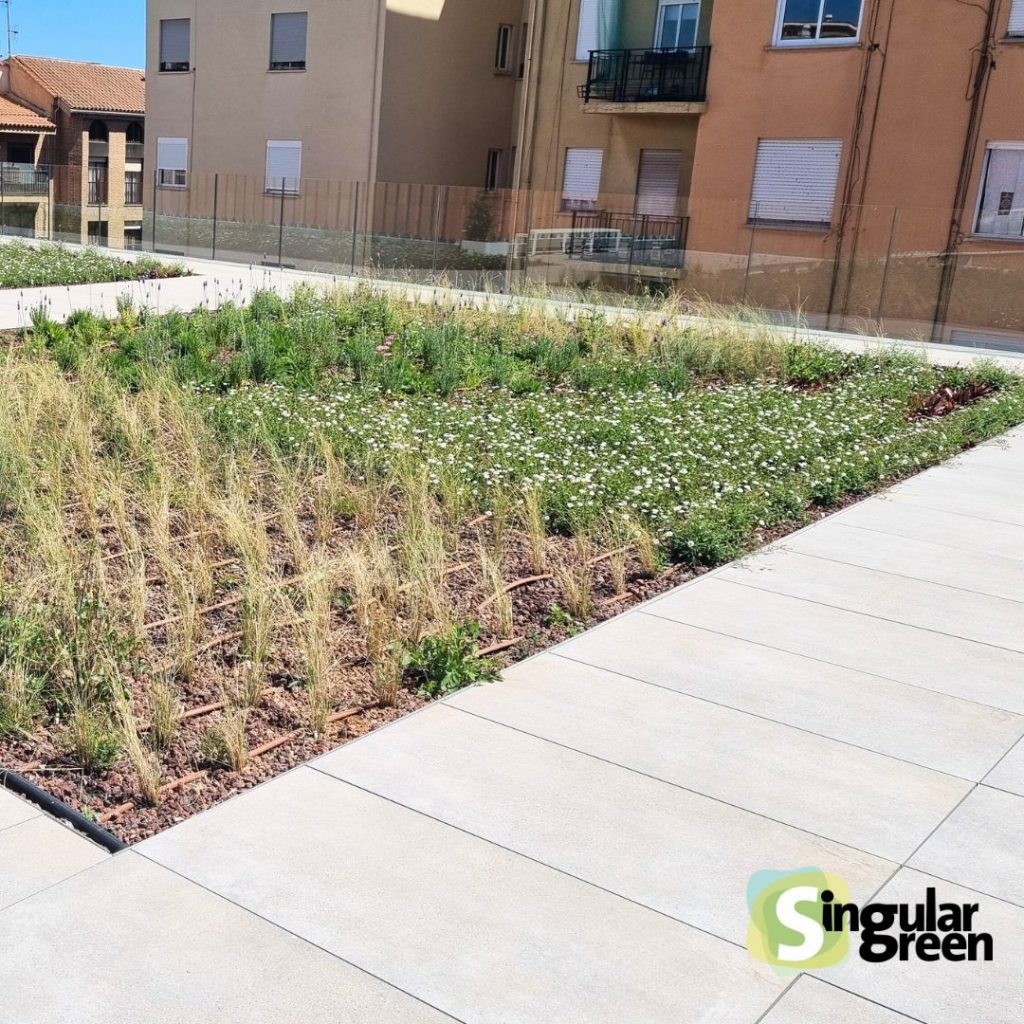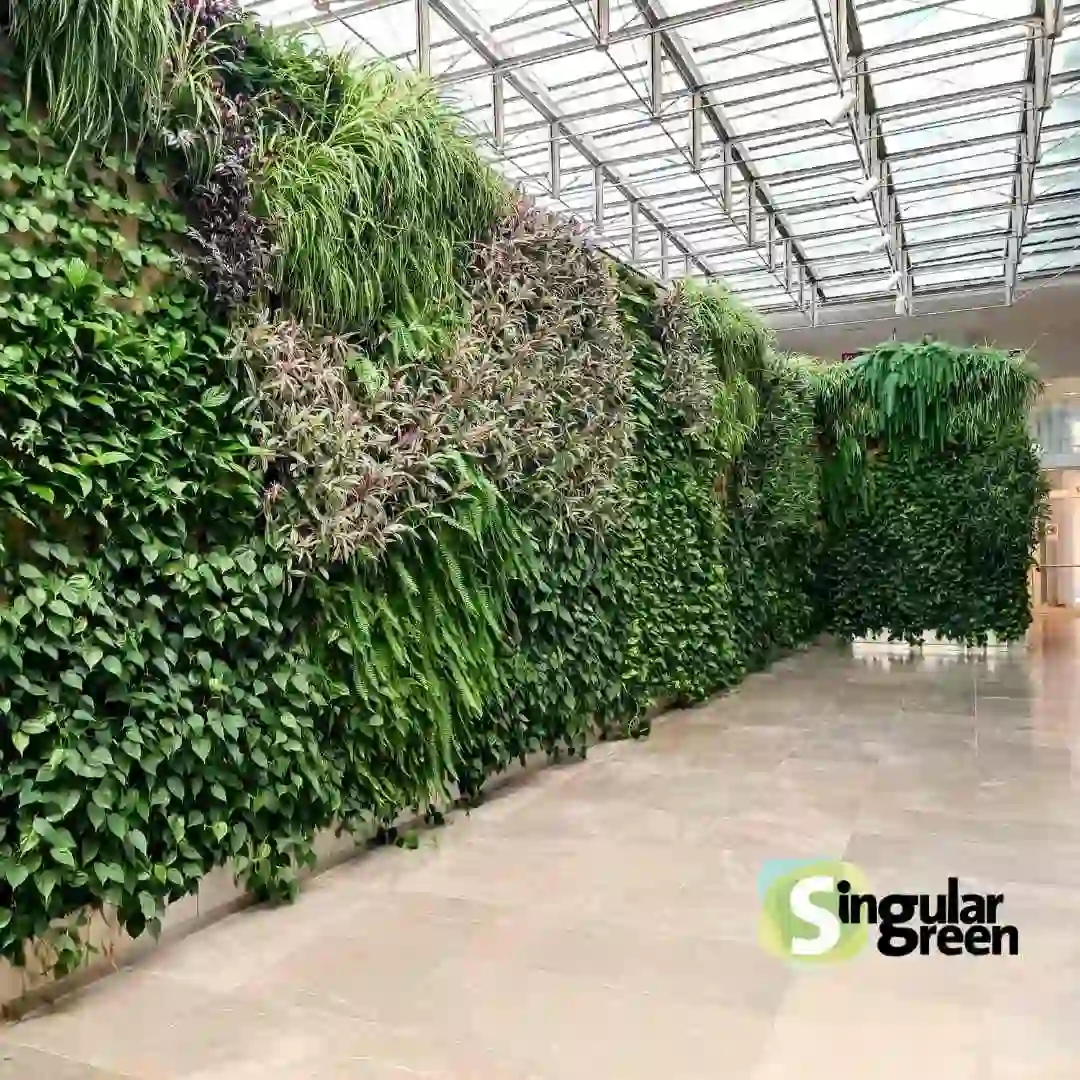Introduction to Urban Green Roofs
Urban green roofs, also known as green roofs, are becoming an innovative and necessary solution to address various urban problems.
They not only beautify the urban landscape, but also bring environmental, economic and social benefits.
In cities, where concrete and asphalt dominate, green roofs represent a green respite that helps mitigate the heat island effect, promotes biodiversity and improves quality of life.


Benefits of Green Roofs in the Urban Environment
Energy Efficiency
Green roofs improve the energy efficiency of buildings by acting as natural insulators.
In summer, they reduce indoor temperature by absorbing heat and in winter, they retain indoor heat, reducing the need for heating.
Improved Air Quality
Green roofs help filter the air, trapping pollutants and improving urban air quality. Plants on green roofs also contribute to oxygen production and carbon dioxide absorption.
Reducing the Heat Island Effect
The urban heat island effect refers to increased temperatures in urban areas compared to surrounding rural areas. Green roofs help mitigate this effect by providing cool surfaces that counteract the heat generated by concrete and asphalt

Increasing Biodiversity
Green roofs can become habitats for diverse plant, insect and bird species, promoting biodiversity in urban environments. This biodiversity contributes to the ecological resilience of cities.
Green Roof Technologies and Types of Green Roofs
Extensive Groundcovers
These are lightweight and require little maintenance. They are designed to withstand extreme weather conditions and generally host hardy, low-growing plants.
Intensive Groundcovers
These are heavier and can accommodate a wider variety of plants, including trees and shrubs. They require regular maintenance and a more robust structure due to the heavier weight of the substrate and vegetation.
Modular Systems
These systems allow for quicker and easier installation of green roofs through pre-vegetated modules that are placed on the roof surface.
Success Stories in the Implementation of Green Roofs
A prominent example is the implementation of green roofs on buildings in the city of Copenhagen.
Here, green roofs have been adopted on several public and private structures, improving urban aesthetics and offering numerous environmental benefits.
In New York, the Barclays Center is another example of a green roof that helps the city manage rainwater and reduce the heat island effect.
Impact on Biodiversity and the Environment
Green roofs not only contribute to urban biodiversity, but also help to manage rainwater, reducing the risk of flooding by absorbing water and relieving pressure on sewage systems.
In addition, these covers act as natural filters, improving the quality of the water that is ultimately released into the environment.
Economic Considerations and Cost-Effectiveness
Energy Savings
The energy efficiency of green roofs translates into significant savings in heating and cooling costs. This not only benefits building owners, but also contributes to environmental sustainability.
Valorisation of real estate
Buildings with green roofs tend to increase in value due to the environmental and aesthetic benefits they offer. Buyers are increasingly interested in sustainable properties that provide a healthier living environment.
Challenges and Solutions in Green Roof Implementation
Initial Costs
One of the main challenges is the initial cost of installation. However, the long-term benefits in terms of energy savings and increased property value can offset this initial investment.
Maintenance
Groundcovers require proper maintenance to ensure their longevity and effectiveness. This includes irrigation, fertilisation and pest control, which can be a challenge for some homeowners.
Structural Considerations
It is crucial to assess the load-bearing capacity of the roof prior to the installation of a green roof. Intensive roofs, in particular, require more robust structures to support the additional weight of the substrate and vegetation.
The future of green roofs in cities
The future of green roofs is promising, with more and more cities adopting policies that encourage their implementation.
Green roofs are becoming an integral part of urban sustainability strategies, helping cities adapt to climate change and improve the quality of life of their inhabitants.
Integrating green roofs into urban design not only responds to an aesthetic need, but also to an urgent environmental and social demand.
Green roofs represent an investment in the sustainable future of our cities, offering effective and ecological solutions to contemporary urban challenges.
Conclusion
Urban green roofs are an innovative and necessary solution to improve the sustainability of our cities. They offer a wide range of benefits, from energy efficiency to biodiversity enhancement.
With proper planning and regular maintenance, green roofs can transform urban environments, creating greener and more liveable cities for future generations.







